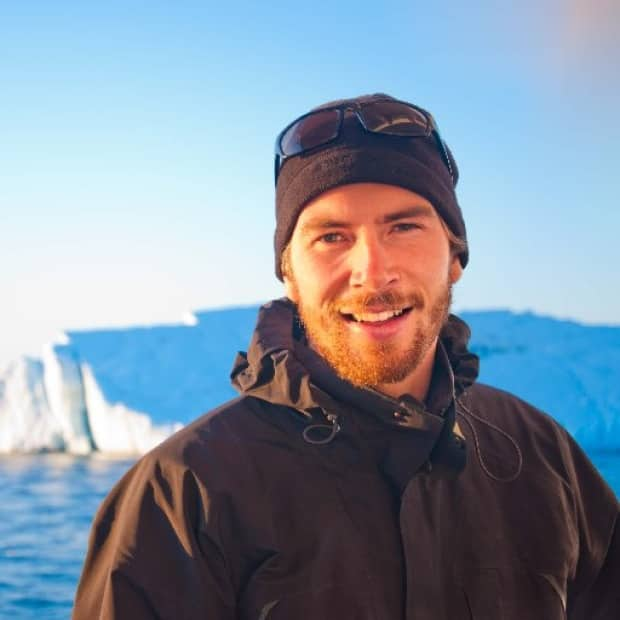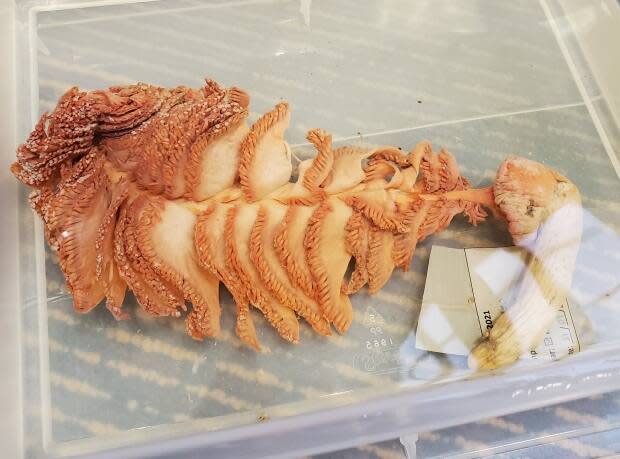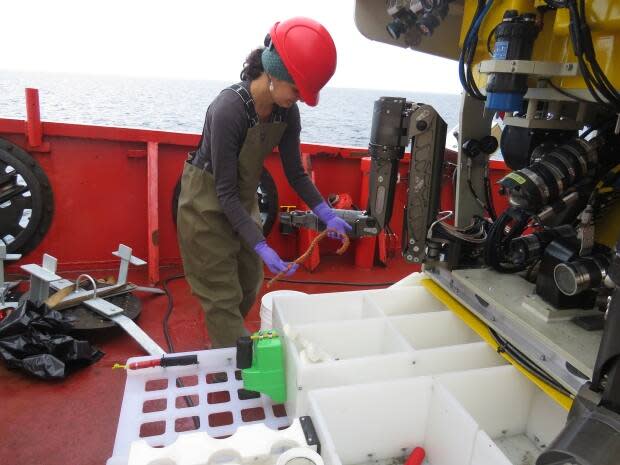In the frigid depths of the Labrador Sea, these scientists are studying coral in novel ways

Two heads are better than one at solving a problem, as the old saying goes.
Well, imagine the strides in ocean science when 36 researchers come together on a month-long deep-sea mission.
That's exactly what happened this past summer on board the Canadian research icebreaker CCGS Amundsen, as part of its annual science program.
The trip eyed the deep-water corals of the northern Labrador Sea and Baffin Bay, seeking to reveal answers to mysteries about how ecosystems far, far below the surface actually operate.

Maxime Geoffroy, a fish specialist with the Marine Institute in St. John's and chief scientist for the mission, describes the 28-day journey as a holistic approach to science. He says having such a wide variety of scientists on board one vessel — from geologists to people analyzing water nutrients — can bring researchers a new understanding of the complexity of the ocean.
"If I'm looking at fish and I don't really look at the habitat where they could spawn near the bottom, then I lose a whole perspective of their lifecycle," he said.
"But if I can sit at lunch with a specialist of the bottom habitat, and have a discussion about why these fish are there ... then it brings a whole new perspective about what we could expect in the future, in terms of reaction to the environment."
Deep water corals
Barbara Neves, a research scientist with the Department of Fisheries and Oceans in St. John's, studies corals.
While trees on land act as a habitat for birds, insects and mammals, on the sea floor, corals have the same important function, she explains.
"So you might see shrimp or fish or little bivalves or little worms that live in association with them, because they want them to as a place to rest or to feed or to hide," said Neves.

Researchers hope to be able to confirm basic ecological questions about whether or not deep-sea corals feed on the same kind of food as corals closer to shore.
Neves says this expedition was also critical for widening their knowledge base about the distribution and variety of corals, as well as answering questions about the depth limits of corals and how quickly the tree-like animals grow.
"We've seen sites that we had never visited before, and we saw a lot of very amazing biodiversity on the sea floor. And we did some experiments that we had never conducted before," she said.
One experiment involved what Neves calls a staining chamber.
The arm of a remotely operated vehicle places a round chamber over the top of a coral, covering the animal. A deflated balloon, filled with dye, sits inside the chamber.
An external handle triggers a needle to puncture the balloon and then the dye is released, staining the coral.
"We left it there for a few hours. Then, we recovered the chamber later and we plan on going back to that site in about two years to recover that coral, and then examine the skeleton that now will have a stain mark," said Neves.
Watch scientists in action aboard the CCGS Amundsen:
According to Memorial University researcher Evan Edinger, deep sea corals are oceanographic recorders. Edinger studies corals and other organisms that make their skeletons from calcium carbonate.
"We bring back these coral skeletons, we can look at both how fast they're growing and how long the corals live, but also what the corals can record in terms of oceanographic change," said Edinger.
Trees on land have growth rings, and those rings can help reconstruct change in climate over time. Edinger says corals have growth rings, too.
He says their experiments will hopefully give further clarity on how often deep-sea coral growth rings are formed.
"To figure out whether the growth lines are formed annually, which is what we think, or if there are some annual growth rate for more than one ring per year, that actually matters quite a lot," said Edinger.
"We want to be able to understand what the growth rings mean and exactly how old these species are, so that we can understand just how vulnerable are the ecosystems that they're built around."
Ocean acidification
As the climate changes, the ocean absorbs more carbon dioxide. This means the ocean environment becomes more acidic.
The more acidic the water becomes, the more difficult it is for corals to form their skeletons.
"Think of osteoporosis, but apply it to coral skeletons that are under conditions of ocean acidification," Edinger said.

"They can make a skeleton, but their skeleton isn't going to last very long in terms of actually building a habitat. So how does that change affect the organisms that build habitat for other organisms? Well, we don't know. We're trying to figure that out."
Because of the collaborative nature of this deep-sea voyage, coral scientists have a better chance of answering those kinds of questions.
While some scientists focused on corals, there were other scientists collecting water samples to measure the dissolved calcium carbonate that corals depend on for growth.
While the at-sea time for scientists aboard the CCGS Amundsen was lengthy, the work of poring over the collected material will be even lengthier.
Geoffroy says the data analysis could take one to two years before it's complete.

 Yahoo Finance
Yahoo Finance 